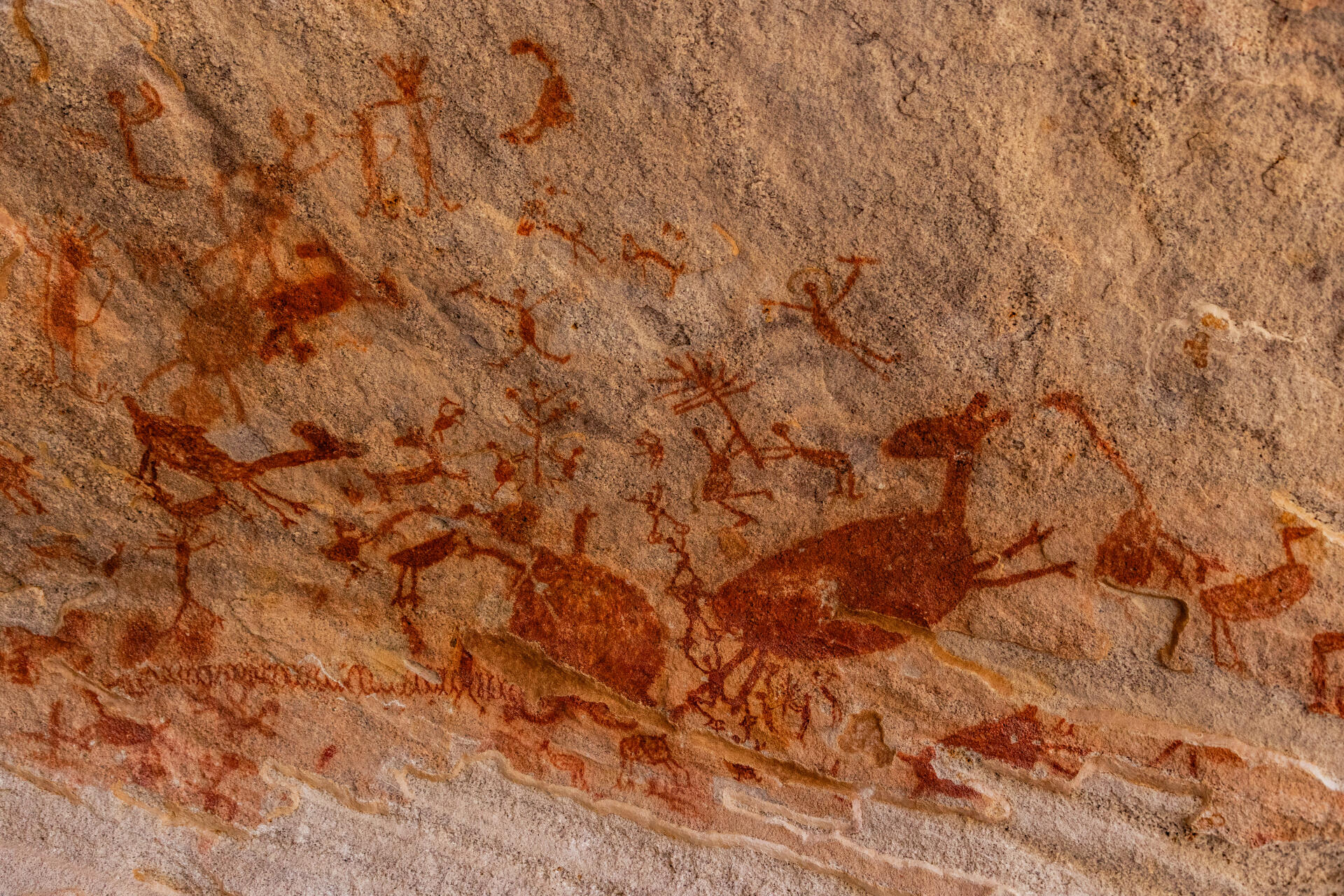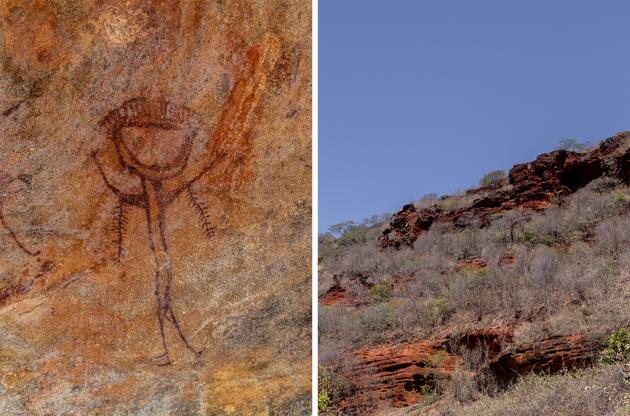


Brazil's Serra da Capivara cave paintings are under threat
FeatureThis natural park in the Nordeste state of Piaui is a 130,000-hectare environmental reserve and open-air art gallery. But the UNESCO World Heritage site is suffering from the effects of mass tourism, climate change and financial difficulties.
Was prehistory a party? Judging by the cave paintings in Brazil's Serra da Capivara, we'd be tempted to say yes. On fragile arenite walls, human figures frolic amid deer, armadillos, crabs and rodents. Some appear to be dancing and swaying, forming cheerful pyramids, arms outstretched to the sky. Others, their phalluses erect, are in the midst of a sexual act.

Seen from here, in the state of Piaui, on the edge of the Nordeste region, everything seems lovely and voluptuous. At first glance, the Serra da Capivara National Park, a UNESCO World Heritage site and archaeological jewel of the Americas, conjures up a vision of blissful effervescence, with its more than 1,000 sites of cave paintings and engravings dating back 6,000 to 12,000 years. Hence its well-deserved nickname of the "Brazilian Lascaux."
While the scenes depicted are open to infinite interpretation, their artistic value is not up for debate. As in a cinema, everything here is movement: Characters run and leap and styles intermingle, from ochre pigment (from hematite, an iron oxide) to milky white (from gypsum). The technique used to fix them to the rock remains a mystery. Some researchers suspect the use of a mixture of animal fat, sap and even saliva and blood.
But the Capivara is much more than an open-air gallery of prehistoric art. It's also a 130,000-hectare environmental reserve, crisscrossed by glowing canyons and carpeted by the Caatinga, meaning "white forest" in the indigenous Tupi language, an ecosystem of thorny brush and leafless shrubs. Snakes and rodents, giant anteaters and spotted jaguars roam between the frescoes.

The 'Napoleon of the Nordeste'
Everything is done to attract tourists: perfectly groomed trails, wooden platforms, disabled access, nighttime illuminations and themed signage. There were 16,000 vistors in the first quarter, 35% more than in 2022. Two weekly flights reach the nearby town of Sao Raimundo Nonato and its airport in the (approximate) shape of a capivara (capybara), the huge, placid rodent that gives the park its name.
And that's not all: The remote Serra da Capivara is home to six research laboratories and a campus of the Federal University of the Sao Francisco Valley (UNIVASF), which offers several master's degrees. It is also the location of a number of cultural institutions, including the very modern spiral-shaped Nature Museum, which traces the biological history of the planet. Cycling races, hiking trails and even opera concerts are organized between the canyons.
You have 80% of this article left to read. The rest is for subscribers only.
